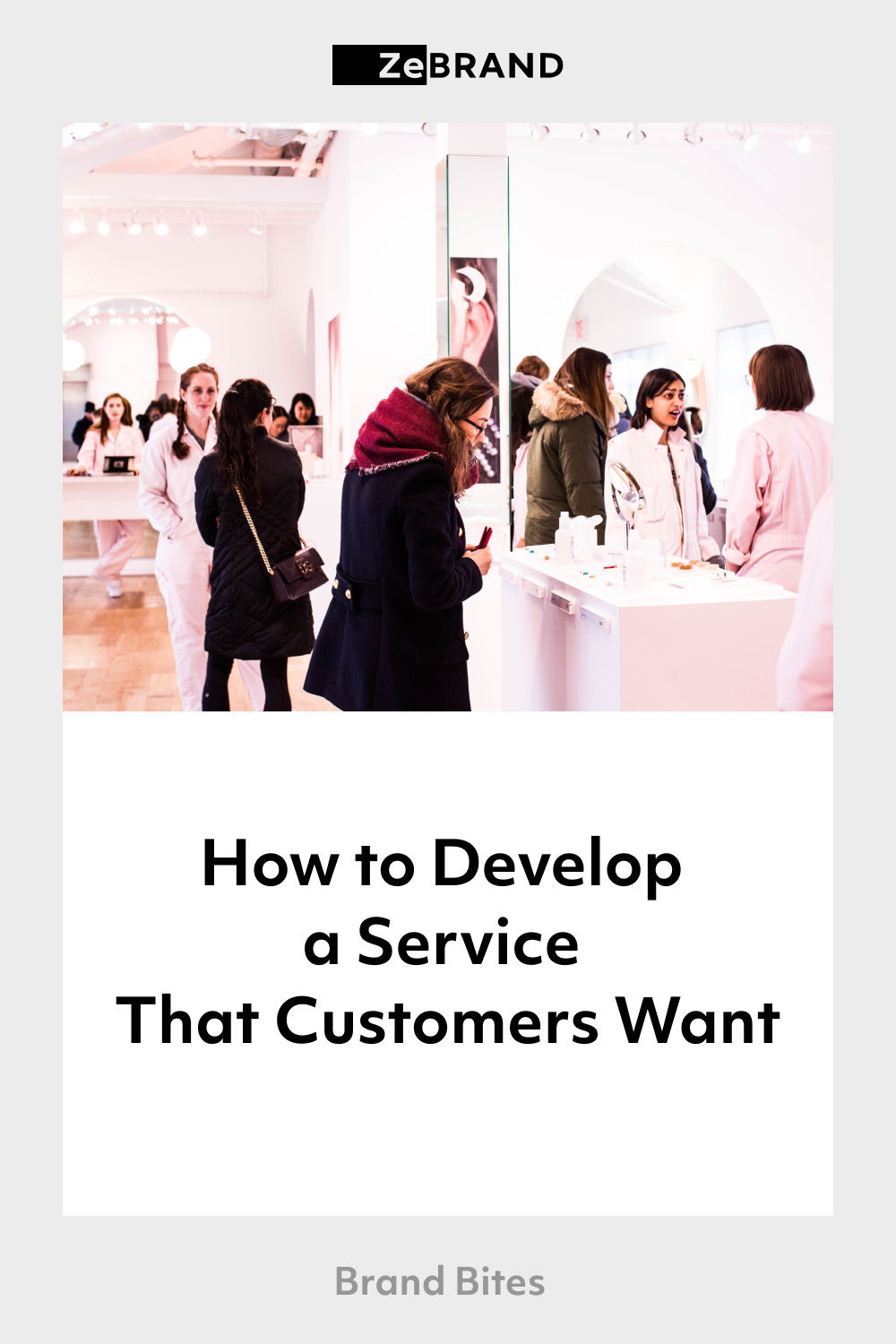How to Develop a Service That Customers Want

Customers have high expectations when they shop, be it online or offline.
Expectations from customers in the modern, digital age are higher than ever before. Having a connected and seamless experience across offline and online services is the new norm. Customers want to have personalized experiences without being treated as a data point.
A report by Salesforce showed that “76% of customers now report that it’s easier than ever to take their business elsewhere — switching from brand to brand to find an experience that matches their expectations.” Businesses aren’t sitting back when facing these challenges though. By using advanced technology like artificial intelligence, drone technology and new delivery systems, businesses are innovating and developing services that disrupt the status quo.
In this highly competitive and challenging environment, it’s important to think about what customers want and how you can develop a service or business that meets these customer needs. Customers are shopping around, but are keen to find a business that fits their criteria.
In this article, we breakdown some of the key things for you to consider so you can develop a service that customers want or turn your existing service into the service of choice for customers.
1. Define who your ideal customer is
Defining an ideal customer gives you focus. Conduct some research and think about the various things that define your ideal customer. What is the age, background, spending capacity of your ideal customer? What are their interests? What life stage are they in? Once you compile some highlights, you will have a better understanding of who your high-value customers are.
Once you understand who your ideal customers are, you can begin to understand what makes them tick and then deliver a service to them that meets their needs. It then becomes easier to turn these customers to loyal customers and improve your service based on their needs.

Photo by Ellen Auer on Unsplash
2. Design a great experience for your ideal customer
Every time a customer interacts with your brand in-store, or online, you have an opportunity to leave an impression on them. A positive impression can lead the customer to come back again; conversely, a negative impression can lead to negative brand perception. The customer should have a consistent and positive experience with your brand in all steps of their journey.
By defining your brand identity and brand attributes, connecting your brand attributes with user experience, and balancing branding with user experience, you can create a great experience for your customers.
If you are primarily an online business, you should think about how the customer will navigate your site, how many steps they need to take to make a purchase and if the experience between devices is seamless. If you have a brick and mortar presence as well, then it’s good to think about how customers shop across these two mediums.

Photo by Blake Wisz on Unsplash
3. Connecting Online and Offline
With many businesses balancing an offline (brick and mortar) presence with an online presence, it becomes important to prioritize how customers move through these two ecosystems.
From product details, to billing and packaging, in-store experiences and customer experience, everything should be as seamless as possible.
・Complementing in-store and online purchases
Many customers today tend to browse online and buy in-store or buy online, then pick up the product in-store. To save time and be more efficient, businesses are starting to put various technologies in place such as self-checkout, inventory check, question and answer sessions with specialists in-store etc. Walmart has a great system of using tech to service these cross channel customers. For example, customers shop online and pick up their product in-store so they don’t have to wait too long. Having a great website, then having systems in place in-store that allow customers to make the switch from offline to online with ease, will go a long way in ensuring the customer has a great shopping experience and comes back again.
・Cross-selling
Understanding your customers helps you figure out what kind of products they prefer to buy online and in-store, in addition to what items tend to be purchased together. You can then create a detailed cross-selling strategy based on these insights.
・Using in-store for unique, personalized experiences
There may be value for your business in bringing the customer to the store. A study showed that 71% of shoppers spend more when in-store than online, so there may be opportunities for up-selling to online customers by bringing them to your physical store. You can host special events, launches, offer various in-store incentives, and more.

Photo by Morning Brew on Unsplash
4. Test based on customer input
Using inputs and feedback from customers to enhance your product or service is a great way to give customers the service they want. You can keep testing new concepts on through user surveys, interviews, or focus groups consisting of your target audience to see what works and what doesn’t. With testing, you can then define your priorities, keep improving your overall business offering, and develop a service that customers want based on their needs.

Photo by Jon Tyson on Unsplash



